Drawing inspiration from the 90s to the 2000s. For Casa Barilli, it was the era.
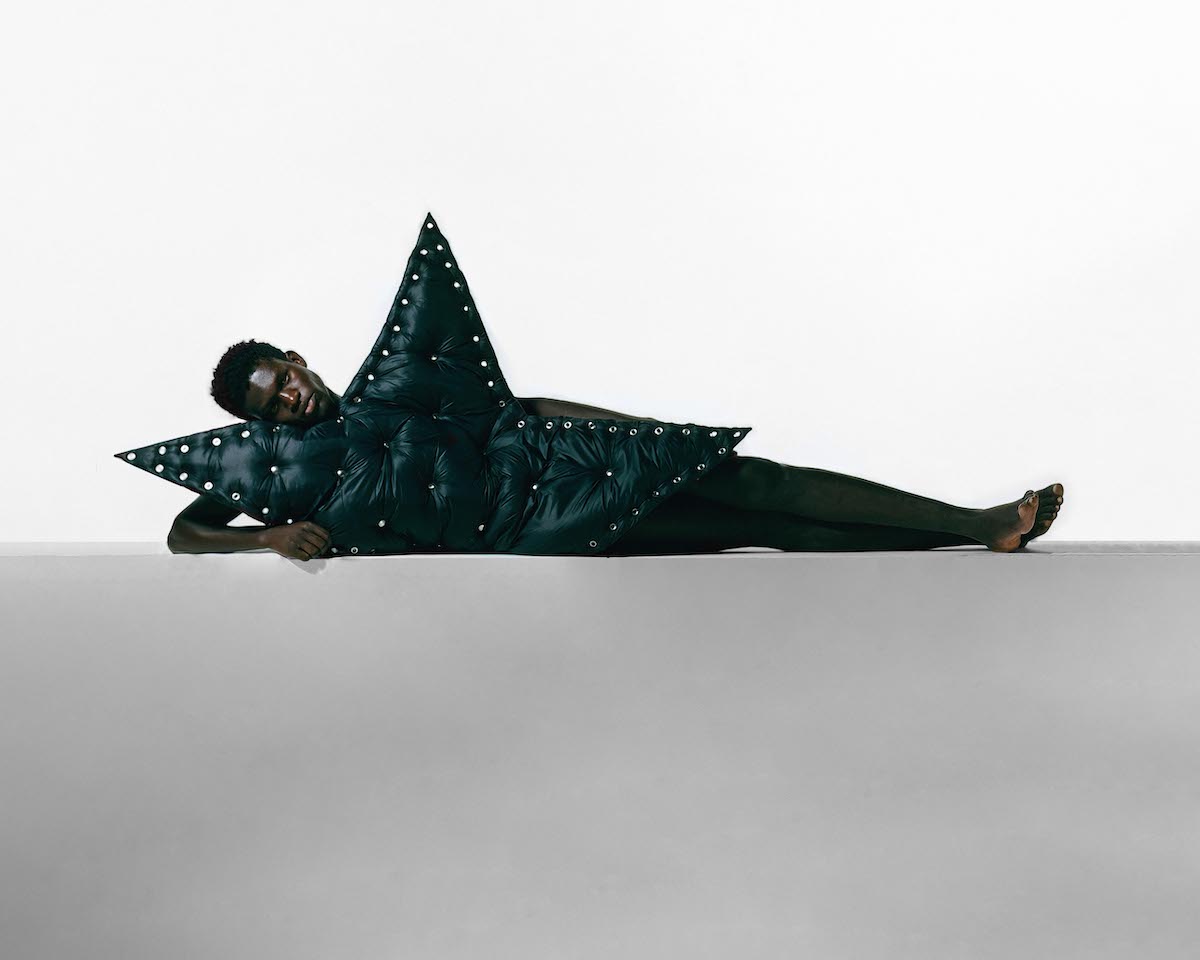
I HIT MY HEAD TOO HARD, NOW ALL I SEE IS STARS emerges as the spectacular graduation collection from the mind of Eliah Maag, working under the name Casa Barilli. Graduating from the FHNW University in Basel, Maag takes us on a journey into the realms of modern-day Queer identities, the vibrant growth of his communities, and the indelible influence of pop culture’s legendary icons within his work. This extraordinary collection masterfully captures the essence of pop culture, and its role in fostering identification within the Queer landscape, while simultaneously providing a dreamy escape for LGBTQ+ individuals. With profound homage to the dazzling STARS and cultural icons of the ’90s and early 2000s, Casa Barilli’s creations serve as a tribute to their indelible social and aesthetic impact. In a captivating collaboration, Pavo Marinović and Eliah Maag conjure this combined editorial, resonating with the nostalgia of cherished teen magazine posters and sweeping us into a world of shimmering fantasies.
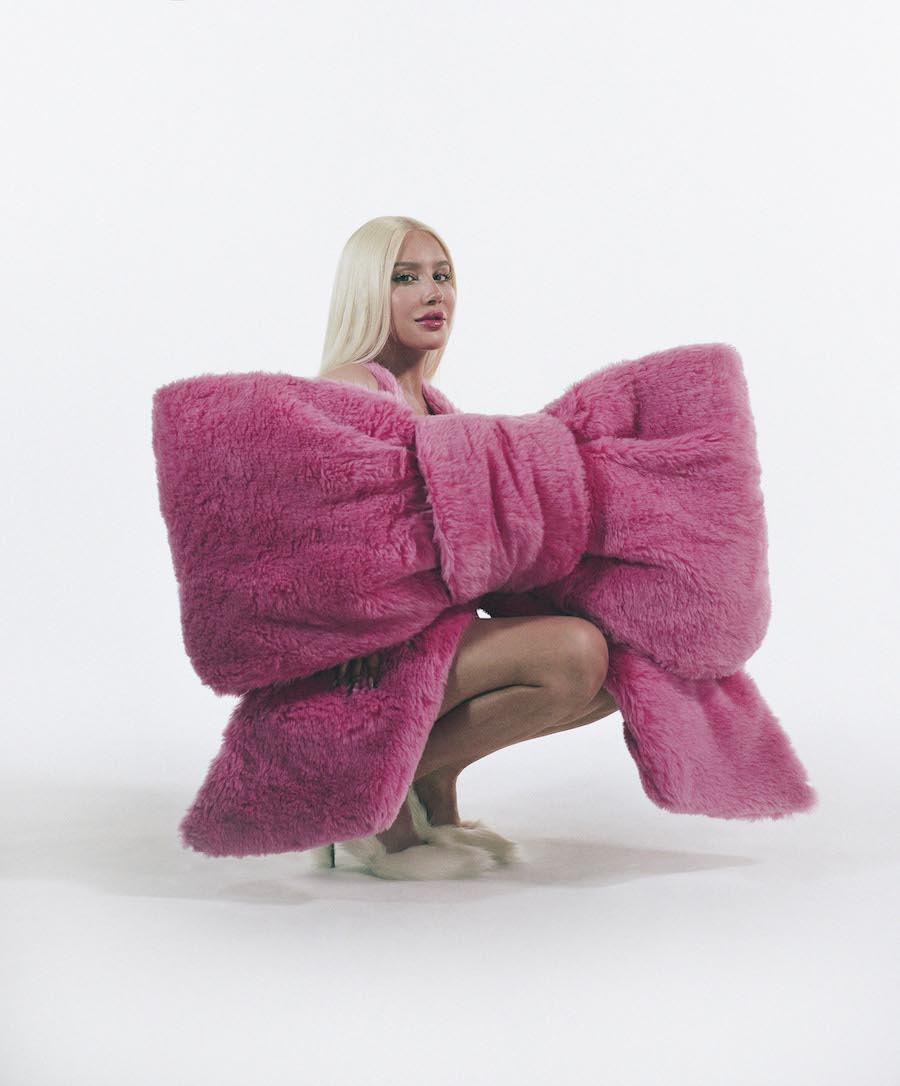
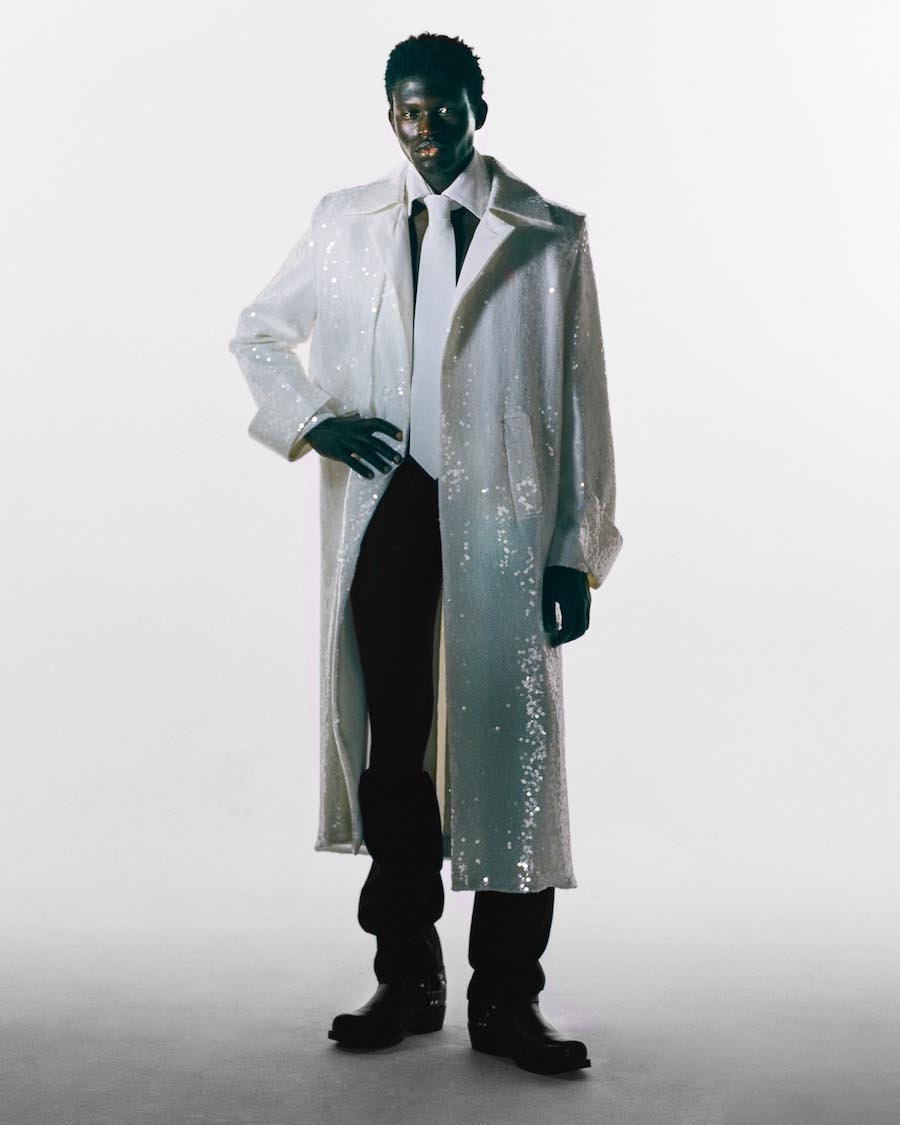
Hey Eliah! Let’s begin with you and the journey that led you into fashion. I still can’t quite believe this is your graduation collection…
Of course! So my name is Eliah, I’m 26 years old and I currently live in Paris. I studied in Basil, but I grew up near the Rhine Falls. Where I grew up is the origin behind the name I’m working under now – Casa Barilli – and my Italian heritage. My grandparents are called Barilli, and I grew up in a big house together with my sister, my aunt, my uncle, my cousins, my grandparents, and my parents. So this is basically Casa Barilli. At some point, I just started calling myself like that. I didn’t want to work under my name, at least not in fashion.
Amazing, also that you studied in Basel, what is the scene like there?
To be honest, I was kind of over it before I moved. I love the city, but I also had a lot of changes; I was in Berlin for half a year, also Hamburg where I did an internship. It was different from just having a 3 and a half year full study program. But after all, I enjoyed the city. There are a couple of fashion things going on in Basel, but Switzerland is really not the hotspot for fashion, I would say.
Could you tell me about the identity of your Casa Barilli? What does the brand stand for?
Most of my work is community-based, and I try to work as much as I can in collectives or in collaboration with other people. Casa is a wordplay just like how the word Maison is for Valentino, but it also symbolizes for me having a house of people uplifting each other, having a design family, and having people around who are also supporting each other. What I try to tackle in my work is to not have this image of the designer that does everything by themselves. Especially in this project, in this collection, I had a lot of people working with me and creating imagery with me.
How would you describe this community around you?
A lot of them are my friends, a lot of Queer people, and a lot of family members. So basically everyone who’s close to me and is working in a creative field. I’m surrounded by a lot of Queer people, a lot of creative Queer people with the same interests in building communities, working with these communities and getting rid of the designer phenomenon. I have to say, I was also really influenced by my friends from my studies who would start projects, thinking about how they could do something with a more social impact or including people that don’t have a platform to express themselves.
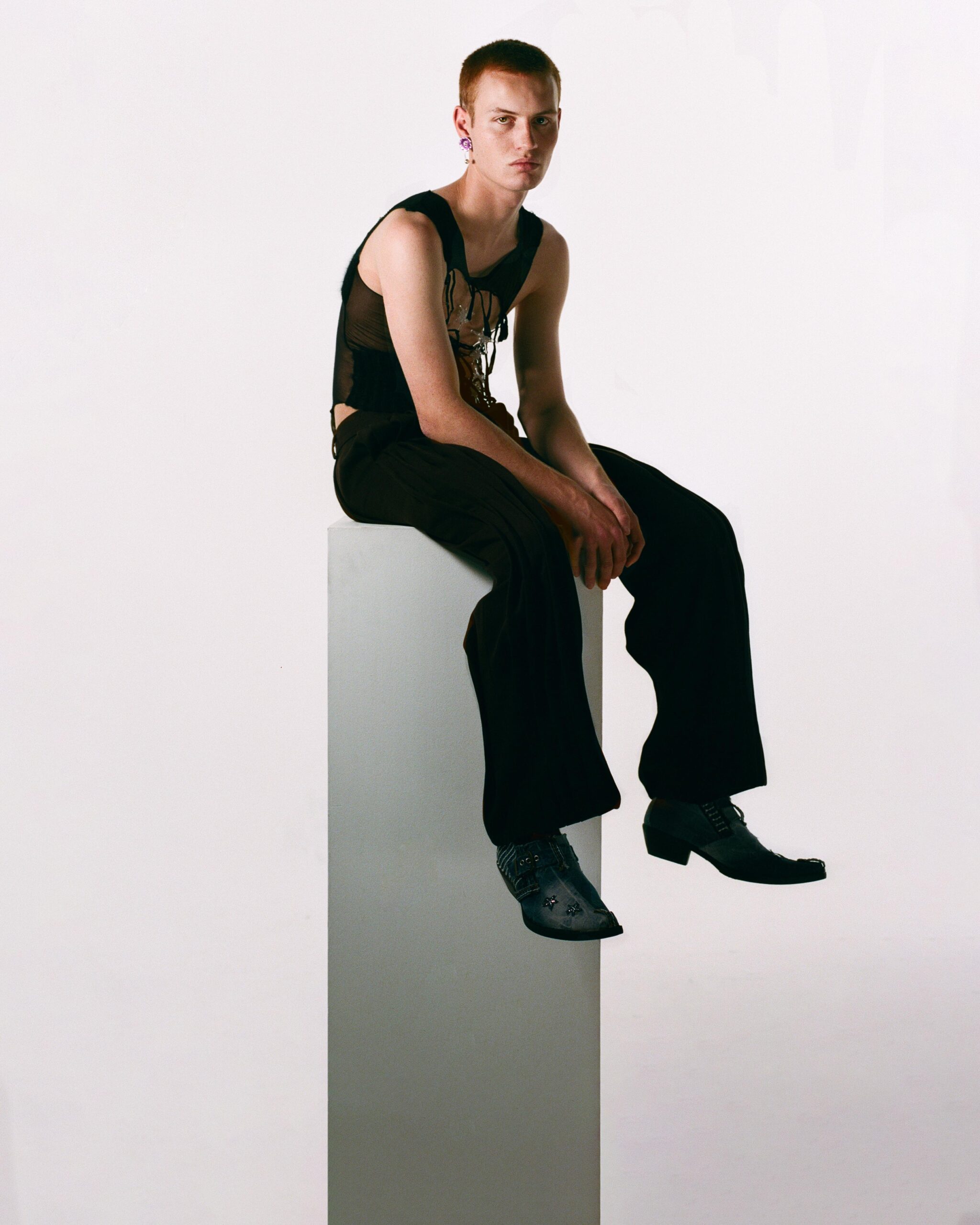
The name of the collection is, I Hit My Head Too Hard, Now All I See is Stars. Talk me through the starting point and thought process behind this collection.
It’s kind of a feeling of confusion; hitting your head, you’re just seeing stars, you don’t really know where to go anymore, you don’t really know what to do, so you kind of pull everything together. It draws from the confusion of growing up as someone who doesn’t really have role models in popular culture and who looks for role models, especially in a Queer context. Since there aren’t so many of these role models, the collection is about communicating with each other through those that do exist in pop culture or internet culture. It gives room to explore how to communicate in this community together and how to look up to the people that we want to be, that we try to be, and that we try to connect to because there is nobody else to connect to. And then, of course, it has a lot of references from past decades, from the 90s to the 2000s, which were also the times of pop stars, supermodels, and of iconic celebrities. It was the era.
In introducing the collection, you used the term dreamy escapism. What does that mean for you?
Yes! It’s a reflection on Queer identities now versus then. I tried to give tools that my models could use to feel how they wanted to present themselves. In that way dreamy escapism is entering a world where you can be this iconic pop star, you can live this allure of being famous and being successful, but in an uplifting way, like a fantasy. It’s the idea of giving a space where people can try to be more themselves, where they don’t have to perform something or act in a way in a certain context that masks who they actually are. A parallel I could think of is the Ballroom scene, which became a space for queer people, especially BIPOC, to escape somewhere. It’s an escape to better conditions.
Your references to the nineties and the naughties are particularly prevalent within your silhouettes. Was there any particular pop star, collection or designer from that period that you felt inspired by?
I was referencing a lot of pop stars, actually. Someone like Kylie Minogue was the inspiration behind the sleeveless hoodie. Then of course a lot of Madonna, a lot of Mariah Carey, with this jean skirt from one look that has butterflies on it. I also made a lot of references to the 80s with the big shoulders, the stars and glitter reminiscent of David Bowie. I tried not to use collections or designers as my references as much as I could. I looked more for inspiration in pop stars who have their own kind of taste and style. I also looked a lot at memes because I was really interested in pop culture and how certain symbols or images become pop culture.
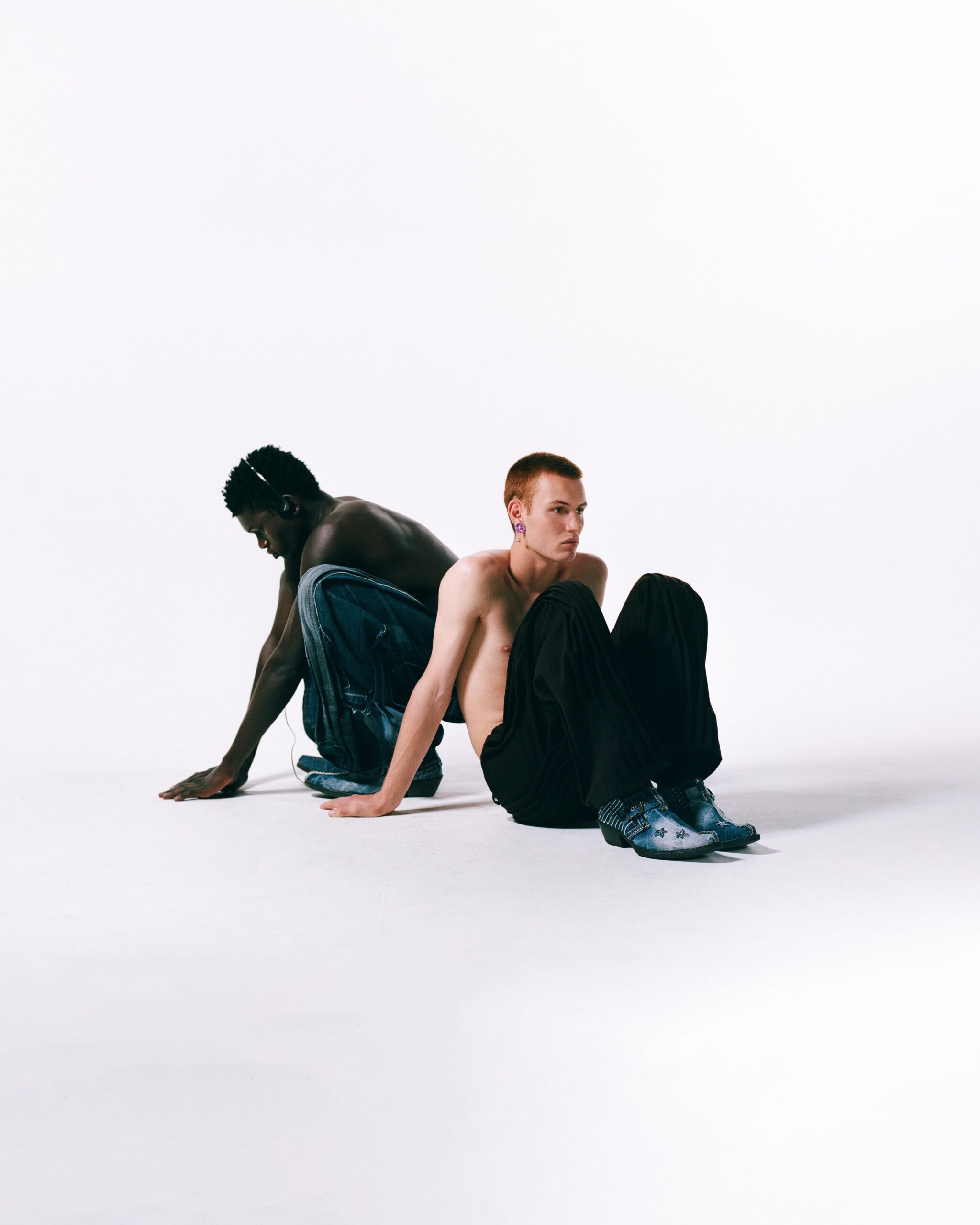
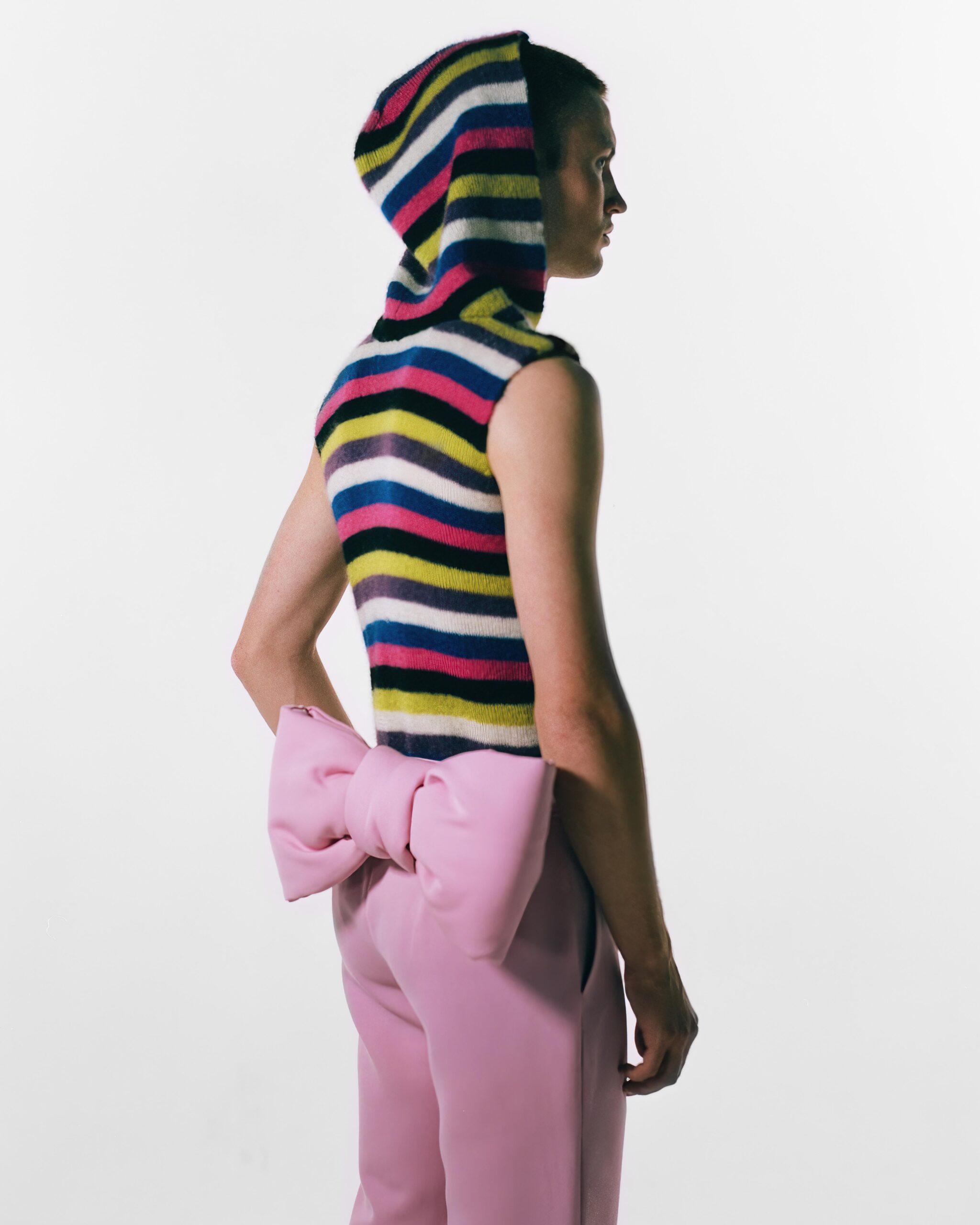
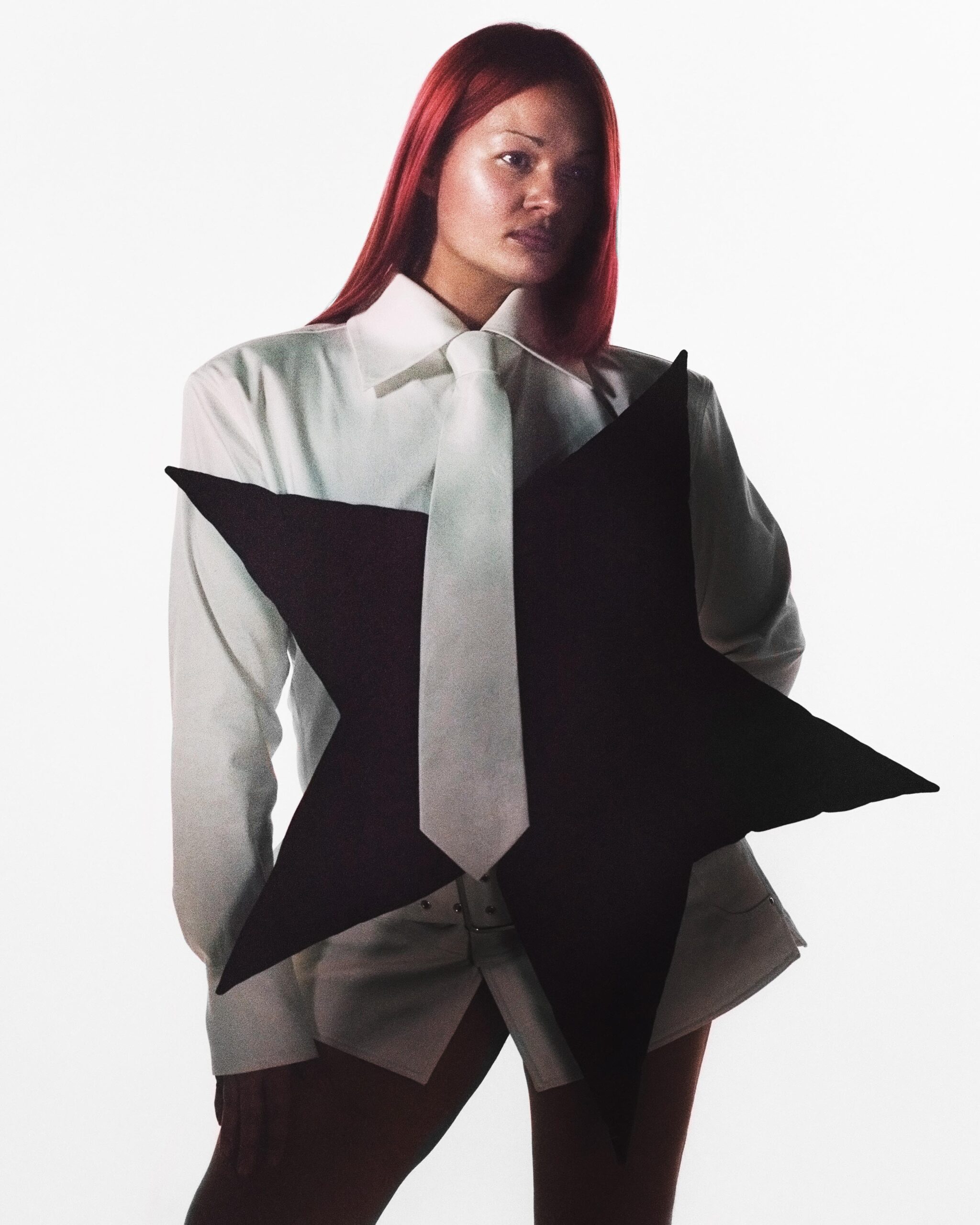
I love how you draw from all of these iconic moments and signature styles. Tell me a little about how you see pop culture influencing our culture.
We cannot neglect the fact that we partly live in a digital world. So many things that are happening, stemming from the media, especially in forming aesthetics and shaping what we like and what we think is cool. In my case, there is a lot more creativity and inspiration drawn from the internet, than locally. We have to see the digital world as an extension of the analogue world. Being involved in the process and the ecology of the internet is super important. I was never a fan of calling the internet evil, especially as a Queer person. The internet is a way of seeing things that you would not see otherwise.
What are you currently working on or manifesting for the future of both yourself and your brand?
My wish is to continue this collaborative way of working to establish multiple projects with different people. And I would wish to expand it to other fields to really spread this community network that would eventually in the end also work without me. My goal is to place a seed that will grow into something greater. I’m not Casa Barilli but all the people working with me are Casa Barilli.
That’s beautiful, truly. Thank you so much for speaking with me today.
Thank you so much too.
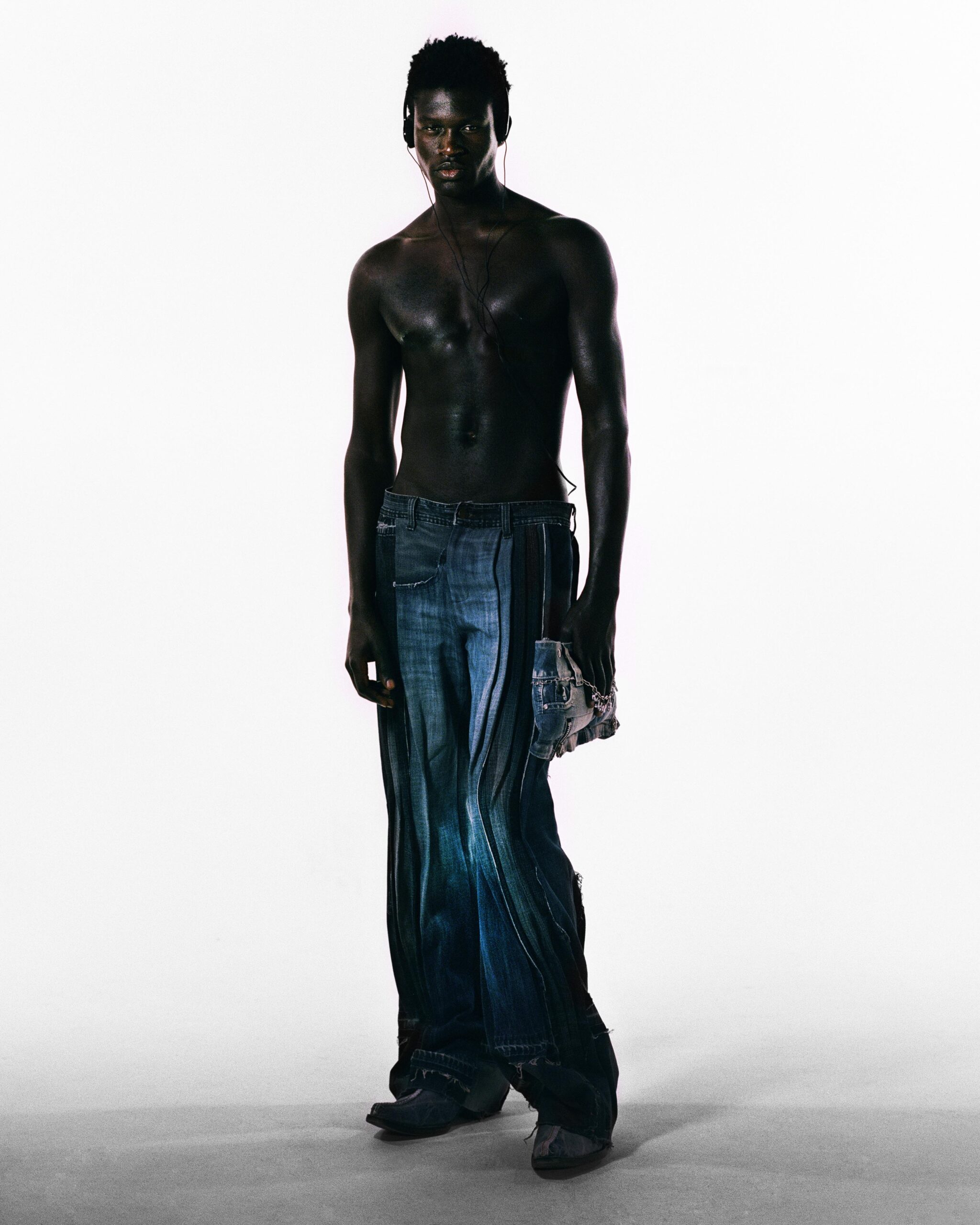
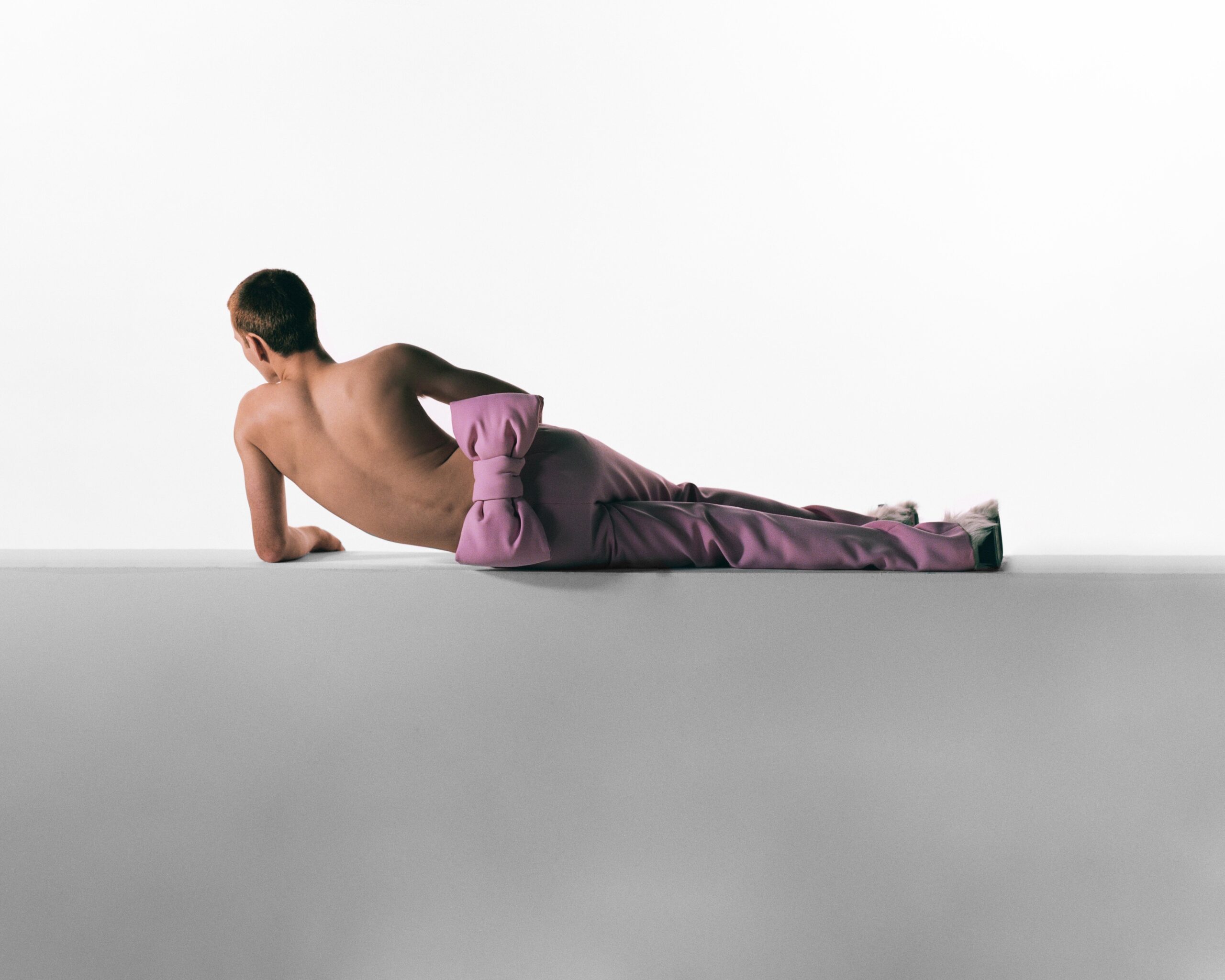
Words by Grace Powell
Creative direction by Casa Barilli & Pavo Marinovic
Photography by Pavo Marinovic
Assistance by Sven Gex
Modelled by Garice, Shafic, Tereza, Theana
All clothing Casa Barilli